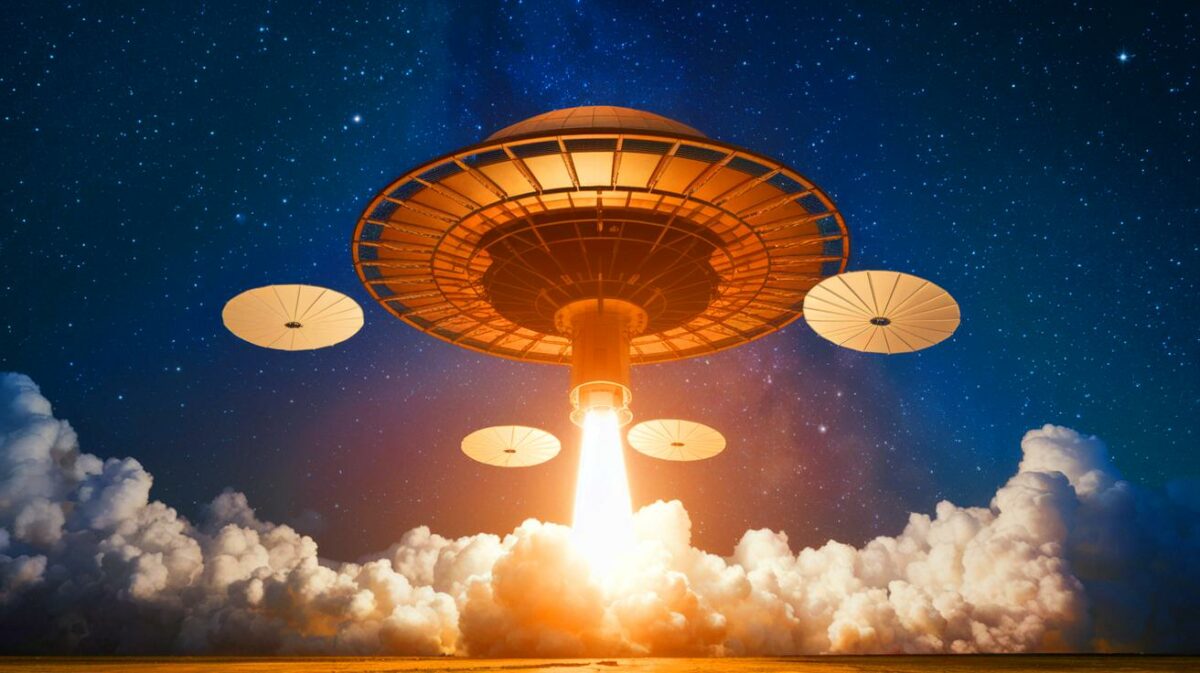| IN A NUTSHELL |
|
In a groundbreaking move that could forever change the landscape of space exploration, SpinLaunch, a California-based startup, is set to launch hundreds of flattened “microsatellites” into low-Earth orbit (LEO). This innovative approach, involving a giant centrifugal cannon, promises not only to revolutionize satellite deployment but also to position SpinLaunch as a formidable competitor to established players like SpaceX. With the potential to set a new record for simultaneous satellite launches, this development is a significant milestone in the quest for more cost-effective and environmentally friendly space missions.
A New Era of Satellite Launches
SpinLaunch’s pioneering technology involves using a giant centrifugal cannon to accelerate spacecraft at incredible speeds. This method is designed to reduce costs and minimize environmental impact, offering a fresh perspective on how satellites can be deployed. The company’s Meridian Space constellation is set to be a game-changer, with the first batch of pancake-like satellites ready to be launched as soon as next year. These microsatellites, each 7.5 feet wide and weighing approximately 154 pounds, will be stacked like pancakes in a “launch bus,” making them significantly lighter than their competitors. This unique design and deployment method could allow SpinLaunch to set a new record for the most spacecraft launched at once, a title currently held by SpaceX.
The development of this innovative launch system is supported by substantial funding, with SpinLaunch recently securing an additional $12 million from Kongsberg Defence and Aerospace (KDA). This brings their total funding close to $150 million, underscoring the confidence investors have in their groundbreaking technology. The involvement of KDA’s NanoAvionics in building the first batch of 250 satellites further bolsters the project’s credibility, setting the stage for a successful launch in 2026.
The Revolutionary Launch System
SpinLaunch’s unique approach to satellite deployment involves a novel launch system that uses a vacuum-sealed chamber and spinning arms to accelerate payloads. This Suborbital Accelerator has already proven its mettle, having launched 10 rockets into suborbital flight from New Mexico. The process involves spinning objects to speeds of up to 5,000 mph, subjecting them to forces as high as 10,000 Gs before they are fired into the upper atmosphere. The success of these test launches, including the most recent in September 2022, sets a solid foundation for the upcoming orbital demonstration, where the same machine will be used to propel payloads into LEO.
The main advantage of this system is its cost-efficiency. SpinLaunch predicts that future commercial launches could cost between $1,250 and $2,500 per kilogram, less than half the cost of SpaceX’s Falcon 9 rockets. Additionally, the absence of greenhouse gas emissions during the launch and the elimination of the need for booster rockets contribute to a more sustainable approach to space travel, reducing both environmental impact and space debris.
Implications for the Satellite Industry
The implementation of SpinLaunch’s technology could have far-reaching implications for the satellite industry. By offering a more affordable and environmentally friendly launch option, SpinLaunch is poised to challenge established players and reshape the competitive landscape. Their Meridian Space constellation aims to provide superfast communications services at a lower price point than its competitors, potentially democratizing access to space-based services.
Moreover, the company’s plans to expand their capabilities with a larger Orbital Accelerator could see them launching up to five commercial payloads into space daily. This ambitious goal, if achieved, would dramatically increase the frequency and accessibility of satellite launches, opening new opportunities for industries reliant on satellite technology. However, this increased activity in LEO raises concerns about potential issues such as spacecraft collisions, light pollution, and interference with astronomical observations.
AI Outperforms Chinese Pilots in High-Stakes Aerial Combat: A Glimpse into the Future of Warfare
Looking Ahead: Challenges and Opportunities
While SpinLaunch’s innovations present exciting opportunities, they also come with challenges that must be addressed. The potential for increased satellite activity in LEO could exacerbate existing problems such as space debris and atmospheric pollution from re-entering spacecraft. As the company moves forward with its ambitious plans, it will be crucial to consider these factors and work towards sustainable solutions that balance growth with responsibility.
The success of SpinLaunch’s upcoming launches could set a new standard for satellite deployment, offering a glimpse into a future where space is more accessible and sustainable. However, the question remains: how will the industry adapt to these changes and what measures will be taken to mitigate the potential risks associated with increased activity in low-Earth orbit?
Did you like it? 4.3/5 (20)












Wow, a giant spinning cannon sounds like something out of a sci-fi movie! 🚀
How will the centrifugal cannon handle the fragile electronics in these microsatellites during launch?
It’s a huge problem all the electronics on the circuit boards has to be drenched in epoxy to keep it stable so it keeps working after the incredibly inertia is imparted onto the electronics.
Except that not a single person is worried about this company being competition anytime soon. They’ve been tinkering with their spinning launch system for like a decade and are no closer to making it happen. In fact they plan to attempt to play catch up to starlink with conventional Rockets. Literally no one’s scared including China and SpaceX and it’s deeply embarrassing that you wrote that headline and put your name with it.
Isn’t there a risk of creating even more space debris with all these launches?
Interesting approach, but it sounds like a lot of energy is used to spin those satellites.
Can the technology be adapted for larger payloads, or is it limited to microsatellites?
Is this a sustainable solution given the potential increase in space traffic?
The idea of a spinning cannon is fascinating. Hope it doesn’t just spin out of control! 😜
I’m skeptical. Can this really compete with SpaceX’s proven technology?
Well,it aren’t a quick-hardcore-state-subsidy-fix-like random or another generally/normally non-innovative unknown Xi-chinese start-up,so it might cut it or be rivaling it,if not,be as watchable in that regard/field only👍🙃
Does this mean we’ll have better and more affordable internet connections soon?
Why is China issuing a full-scale alert over this? Seems like an overreaction.
I’m excited to see how this technology evolves. Innovation in space tech is always thrilling!
What are the environmental impacts of using a giant spinning cannon for launches?
SpinLaunch seems promising, but how do they ensure the satellites don’t collide with each other?
This could revolutionize space launches, but what about the safety of the satellites?
How do they ensure the satellites are properly oriented after such a high-speed launch?
Isn’t the G-force too high for the delicate instruments on these satellites?
Spin launch faces many hurdles in physics before it is even possible to make this work. The article touches on the 10,000 g force BEFORE it launches. I doubt most satellites can withstand that kind of pressure to begin with and that is before the payload even leaves the vacuum chamber and collides with the atmosphere, causing an insane g load on the satellite. Also, their suborbital launches mean very little. Every time I throw a baseball it is also on a suborbital trajectory. This tech makes a lot more sense for the lunar surface or mars where the atmosphere is nearly nonexistent. I’m highly skeptical it could ever be practical on earth.
What are the potential geopolitical implications of this technology? 🤔
I’m all for innovation, but this just sounds too futuristic to be true!
Is this technology patented, or can other companies start using it too?
Will this new method reduce the overall cost of satellite services?
Thank you for the informative article! This could be a game-changer for satellite launches. 😊
Are there any plans to test this technology with manned missions in the future?
How does the cost of developing and maintaining this system compare to traditional rockets?
Can this method be used for launching supplies to the International Space Station?
Looks like the space race is heating up again, this time with pancakes! 🥞🛰️
Wouldn’t a spinning cannon cause a lot of vibrations? How do they deal with that?
What happens if the spinning mechanism fails? Seems like a lot could go wrong.
How does this technology affect the current concerns about light pollution in space?
This concept is wild! Who knew pancakes could fly? 🥞😂
How much cheaper are these launches compared to traditional methods?
China is not mentioned once outside the headline. Reporting sensationalism and blocking. Bye@
That is a the most shameful of clickbait-and-switch headlines I’ve seen in a while.
Congratulations Sustainability News. You’re on my block list.
What a joke. More hoopla and wasted time spent pretending we don’t already have zero point energy technology along with antigravity capabilities. Tell me you’re withholding advanced technology from the public without telling me you’re doing that.
Wow